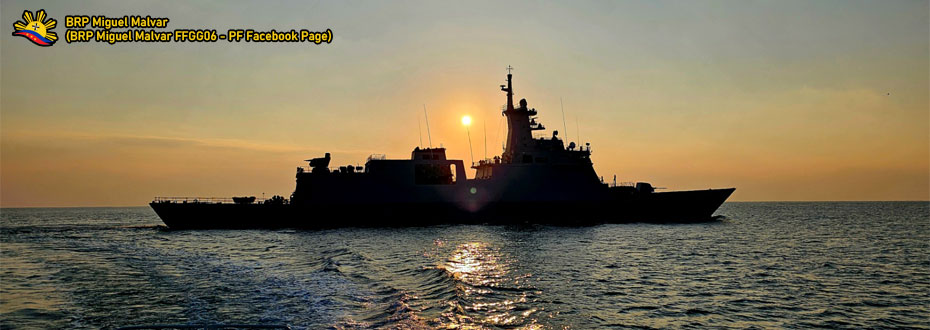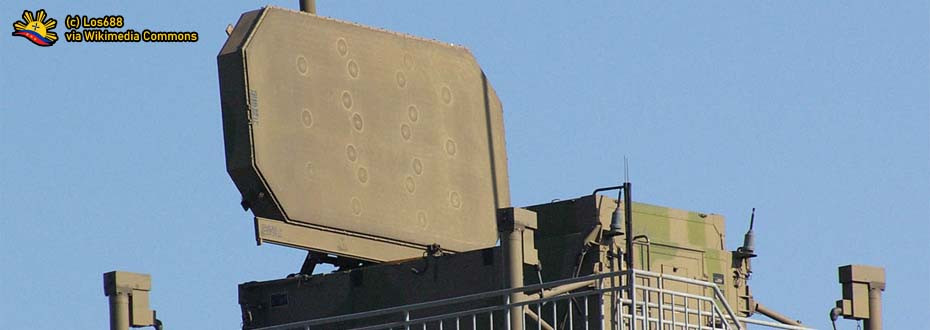 |
The deployment of the NEMESIS anti-ship missile system is an interesting development for the US-Philippine relations.
Image Source. |
From
March 27 through March 28, 2025, United States Secretary of Defense Pete Hegseth visited the Philippines for an official visit, meeting with President Ferdinand R Marcos Jr and Secretary of National Defense Gilberto Teodoro, as part of his Indo-Pacific visit involving United States territory of Guam, and other Indo-Pacific country of Japan.
This is SECDEF Hegseth’s first visit to an Asian country in the official status of his position, aiming to advance defense and security goals with the key officials of the Philippine government.
His visit to the country
has the assurance for an ironclad alliance between both countries in mind, signifying that the Philippines receive that needed continuous support amidst the uncertainties surrounding the practical nature of commitments and relationships of the United States' official foreign policy.
The continuity of this commitment from the Biden administration to the present Trump 2.0 administration is a needed assurance that the Philippine authorities needed to hear from the current United States government.
This visit comes with interesting tidbits as to the type of support that the Philippine government, specifically the Armed Forces of the Philippines, will receive from the United States as the result from this renewed cooperation between both countries, and the expectations as to the things the Philippines will give as a return of investment from this burgeoning relations between both countries. The type of support provided comes on top of
increased troop deployments and rotations by United States forces in the country.
One interesting tidbit highlighted and also the primary topic of discussion is the likely deployment of the United States military’s newest shore based anti-ship missile system, coming with an acronym “NMESIS” (pronounced ‘nemesis’), which stands for “Navy-Marine Expeditionary Ship Interdiction System”. This system will have
its debut deployment into the country in the 2025 Joint Exercise Balikatan, which will take place from
April 21 up to May 9, 2025.
Of course, its deployment always comes with deterrence in mind,
as this has raised on an interview relating the effect that the NMESIS anti-ship missile system has for the overall Philippine defense deterrence, of which the response into the matter also encompass the greater aspects of the country’s deterrence, which includes the ‘ironclad’ alliance that the Philippines has with the United States, along with the current capabilities that the Armed Forces of the Philippines has, to date.
As the deployment of the Navy-Marine Expeditionary Ship Interdiction System or NMESIS gets highlighted in the aspects of the greater scope of current Philippine defense posture and its implication in the current order of the Indo-Pacific region, the discussion relating to this topic will delve primarily on the system’s development, geopolitical implications, and its specifications, giving a full picture that intertwines geopolitical and Philippine defense aspects of the system’s deployment in the country.
WEAPONS DEVELOPMENT
 |
The NMESIS' missile munitions will be the Naval Strike Missile from Kongsberg, the same anti-ship missile found onboard United States Navy ships.
Image Source. |
To understand better the development of the Navy-Marine Expeditionary Ship Interdiction System or NMESIS platform, it is worth to focus more on its munitions first, before focusing on other areas like its launcher and other relevant parts of the system.
For starters, the munition the system has primarily composed of the
Kongsberg-developed and produced
Naval Strike Missile (NSM) system, originated in the Scandinavian country of Norway and is now a mainstay anti-ship missile munition of the United States Navy.
For both the United States Navy and Marine Corps, the responsibility regarding the production of the Naval Strike Missile System
lies with the country’s military defense firm Raytheon, which likely included the ones intended for the Navy-Marine Expeditionary Ship Interdiction System or NMESIS platforms deployed for the
2025 Balikatan Exercise purposes. As the missile munition’s details got discussed, let us now delve into the next part, which is on the missile launcher itself.
With the details now provided on both the Naval Strike Missile and the Joint Light Tactical Vehicle (JLTV) derived ROGUE Fires Carrier missile launcher, the next point on this discussion will now delve on its geopolitical uses that relates to the latest development on its deployment to the Philippines as part of the Joint Exercise Balikatan 2025, and how the extended deployment of the units in the country helps deter threats from a regional adversary like China.
GEOPOLITICAL IMPLICATIONS
 |
Here is the potential site deployment of the NMESIS anti-ship platform during the Exercise Balikatan 2025.
From Orion Intel. |
As the deployment of the NMESIS missile launcher units deployed in the country comes as part of the growing alliance between the United States and the Philippines, the actions taken always come with geopolitical implications in mind, particularly in the dynamics relating to the stability of the Indo-Pacific region at large. Of course, regional powers like China always come to mind, particularly to the areas in the country that the NMESIS will probably get deployed.
One likely location that the NMESIS platform gets deployed is in the area near Northern Luzon,
particularly in the island group of Batanes, a Philippine province nearest to the island country of Taiwan that China desires to reunite under the communist red banner of the mainland.
This is crucially important, as China has plans on blockading the said island country being part of its invasion purposes, with
multiple drills already accomplished by the People’s Liberation Army as part of this worrying push.
Just the deployment of the Navy-Marine Expeditionary Ship Interdiction System (NMESIS) platforms in Batanes
already undermines China’s own adventurism against Taiwan, particularly that securing the Bashi channel near Batanes will put any Chinese ships traversing in the area or the ones taking part in the blockading activities into harm.
The
interoperability that the NMESIS anti-ship platform might provide to the Philippine Armed Forces from their counterparts in the United States military might give insights for the former in the repair, maintenance, and operational aspects of the platform deployed by the latter, particularly for consideration into its purchase as the former currently embarks on its modernization program, aiming to provide the needed credible defense posture that the country needs for territorial defense purposes.
Ultimately, the
extended deployment of the anti-ship missile system in the country will provide an increased deterrence for its own defense, in which it adds to the systems that the United States military has in the country, with the other being the strategically important deployment of the Typhon Mid-Range Capability (MRC) missile of the United States Army. Both systems deployed in the country showcase the Philippines’ importance as a strategic geographic location in the Indo-Pacific that can deter Chinese expansionism.
As the impact and geopolitical implication of the NMESIS anti-ship platform just covered as part of this entry, the next portion of this topic will now cover the specifications and other features of both the Kongsberg-made Naval Strike Missile (the munition onboard the anti-ship missile unit) and the Joint Light Tactical Vehicle derived ROGUE Fires Launcher, itself being an unmanned platform that relies primarily on the remote inputs of its operator, even on operations involving the launching of its missiles.
SYSTEM SPECIFICATIONS
 |
Here are the main attributes of a Naval Strike Missile munition, which is a primary armament of the NMESIS anti-ship platform.
From Kongsberg, through this image source. |
This topic will not be complete if not with the complete discussion about the system specification of what defines a Navy-Marine Expeditionary Ship Interdiction System or NMESIS platform that the United States Armed Forces field throughout the Joint Exercise Balikatan 2025, and eventually going beyond that bilateral exercise phase.
Despite having a subsonic speed, the Naval Strike Missile has the advantage of its maneuverability, as its capability in having an advanced sea-skimming maneuvers gives challenges to the opposition force’s onboard air defense system in intercepting this advanced munition.
Adding information for the Naval Strike Missile, it has the weight of 407 kilograms or 897 lbs, a length of 3.96 meters or 156 inches, and a total range of
around 185 kilometers to
250 kilometers. For comparison, the BrahMos missiles that the Philippine Marine Corps currently have come with a total range of around 290 kilometers, while the SSM-700K Haeseong 'C-Star' missile
has a total estimated range of around 180 to 200 kilometers, at par with the said Kongsberg-developed product.
After talking about the Naval Strike Missile munition that the NMESIS anti-ship platform uses in eliminating its targets, the next component to discuss is the launcher platform and other parts of the system, especially with the chassis and features that considers as an unmanned variant of the Joint Light Tactical Vehicle from Oshkosh.
The
ROGUE Fires Carrier is just one of the multiple variants of the design provided by Oshkosh, with its chassis shared with the MRAP variant widely used in the United States Military.
This means that the vehicle comes as light enough that it is transportable by any cargo aircraft that is likely serving both the United States and the Philippines,
such as a C-130 Hercules aircraft.
The light portability of the
ROGUE Fires Carrier, plus the firepower capability possessed by the Naval Strike Missile as an anti-ship munition, makes the NMESIS anti-ship platform a formidable system that comes as
ideal for deployment into ideal chokepoints like the Bashi Channel, which comes as a crucial part of the containment under the First Island Chain. As part of an integrated network chain of military units, the system relies on inputs from other surveillance units for its targeting operations.
ENDING NOTE
 |
A U.S. Marine Corps Navy-Marine Corps Expeditionary Ship Interdiction System assigned to Medium-Range Missile Battery, 3d Marine Littoral Combat Team, 3d Marine Littoral Regiment, 3d Marine Division is staged at Basco, Philippines, April 26, 2025.
United States Marine Corps Photo |
Like the Typhon Mid-Range Capability Missile System that ever since deployed to the Philippines from 2024, the new Navy-Marine Expeditionary Ship Interdiction System or NMESIS anti-ship platform
come as strategic in its usage, as its design as a mobile, coastal-based anti-ship platform added up to the complex situation in the Indo-Pacific region, particularly relating into adding the deterrence in areas part of the First Island Chain like the Philippines.
Its
deployment to the Philippines as part of the Joint Exercise Balikatan 2025 provides an opportunity to the troops of the Armed Forces of the Philippines, taking part in the activities to learn and to get an interesting insight into the operational and maintenance requirements of the NMESIS platform, which is helpful not only for interoperability of units among both the Philippine Military and its United States equivalent, but also on familiarity on its usage should the former opts for purchasing the system later on.
This is different to both the BrahMos and SSM-700K Haeseong ‘C-Star’ anti-ship missile systems that the Philippine Marine Corps and the Philippine Navy, its parent unit, uses on its coastal-based and ship-based units, respectively.
The deployment of both advanced systems from the United States not only adds to the worry of the Chinese relating to its planned conquest of the island nation of Taiwan, but it also
adds up to the dynamics of the geopolitical situation in the Indo-Pacific which, should they choose it, might put the deployment of the systems in the Philippines in consideration as another potential target. Such aggression puts the premise for the Philippines to tap other like-minded nations and alliances to establish deterrence.
In a final note, the deployment of the NMESIS anti-ship platform in a bilateral exercise with the Philippines is a sign of ever-growing bilateral defense relations that the country has with the United States, particularly in facing a geopolitical situation, with China aiming to dominate the affairs of the Indo-Pacific region.
The Philippines play a crucial role in this ongoing situation, in which it can maximize its strategic location not only to the benefit of the alliance but also in improving its Armed Forces to new heights.


























